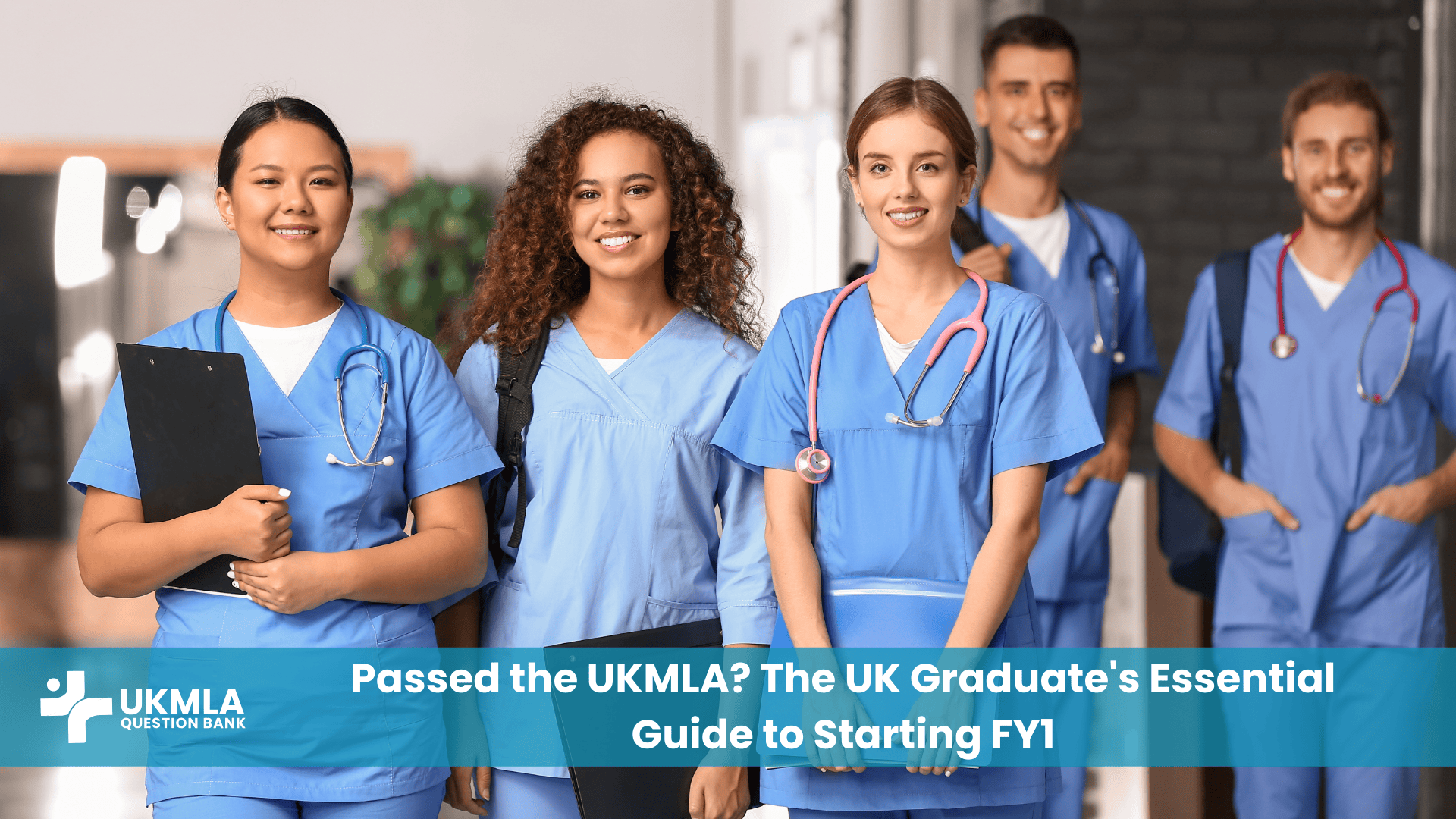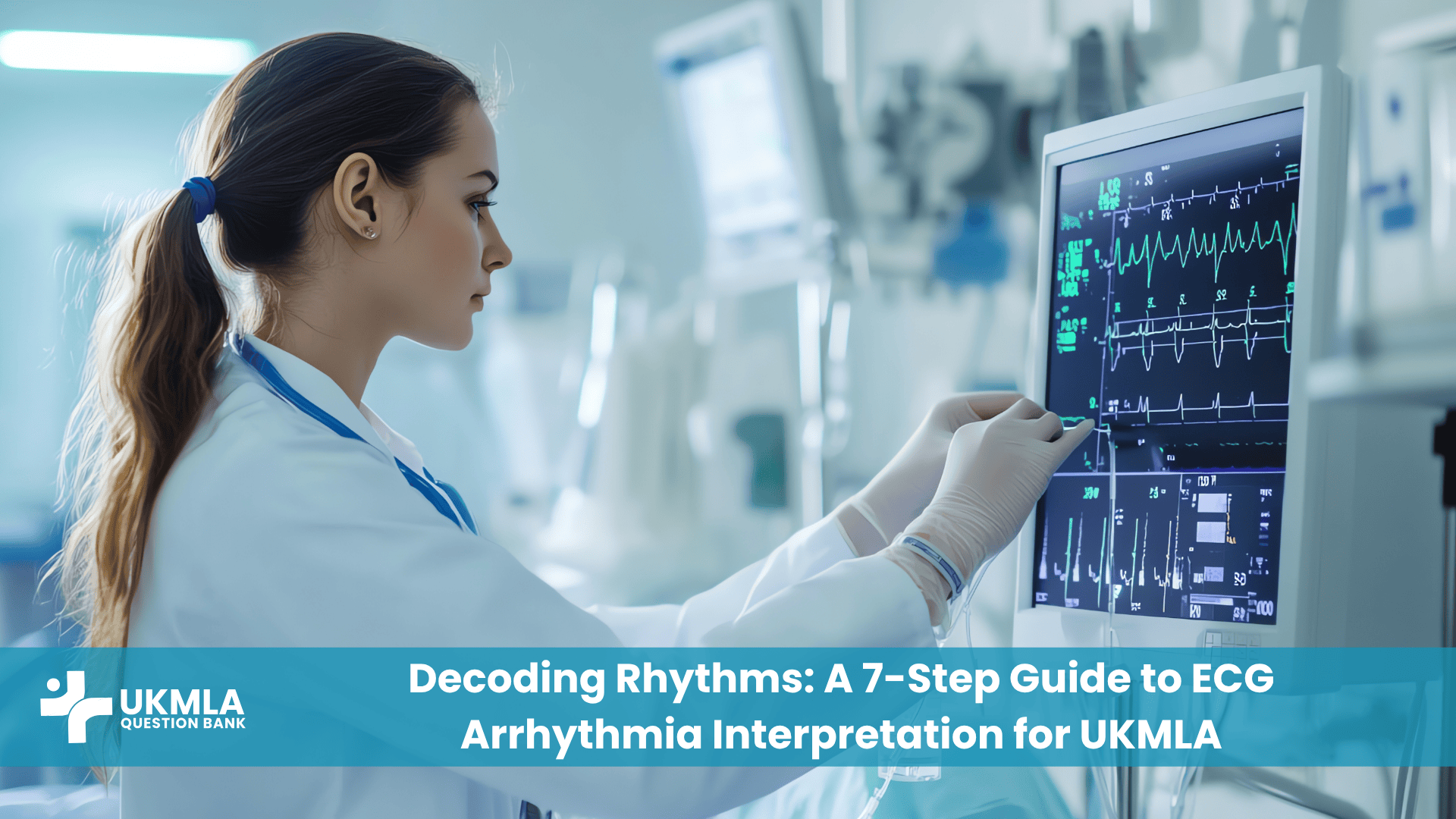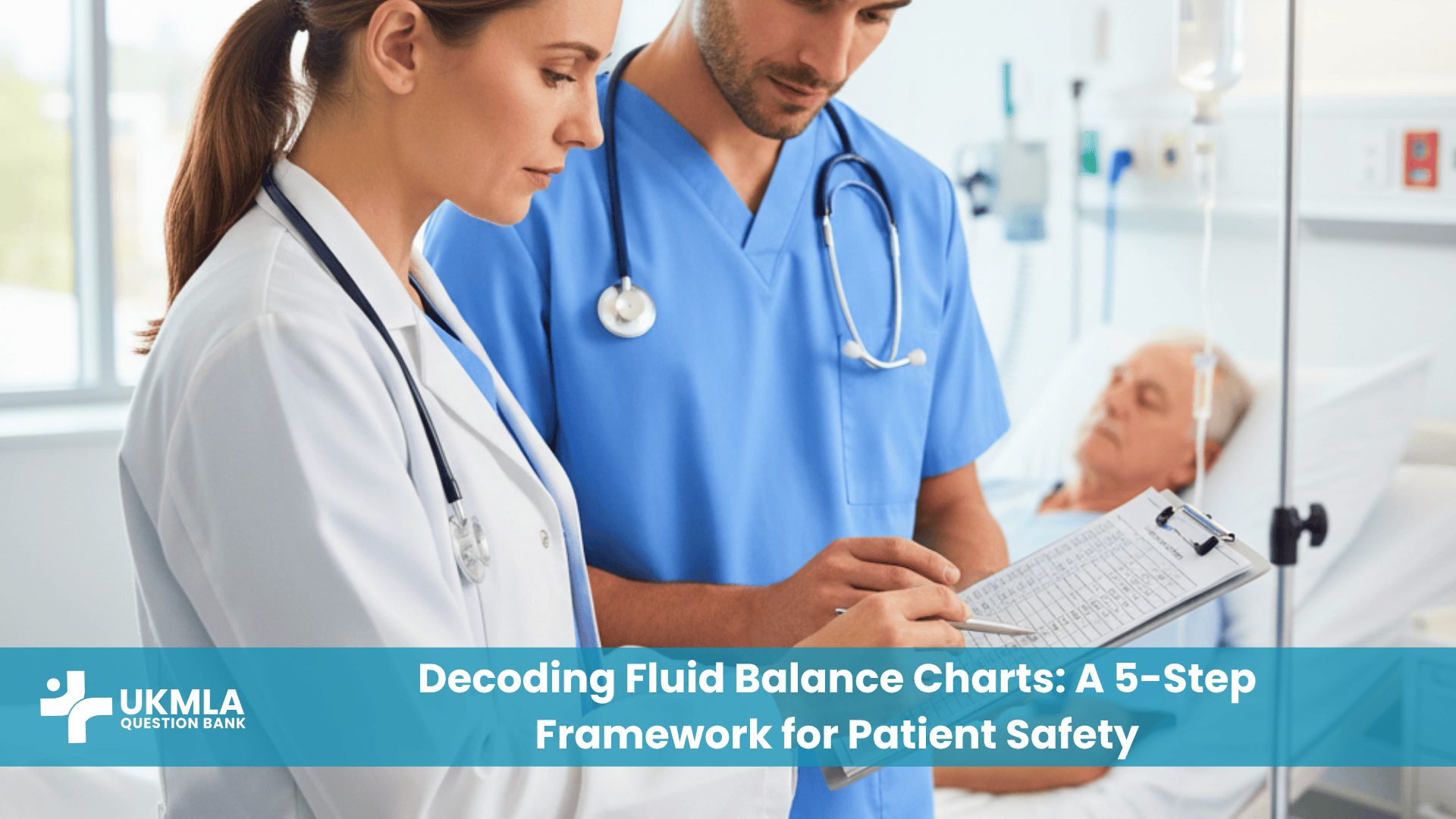Introduction
The next steps for UK graduates after UKMLA success mark the final, exhilarating transition from student to doctor. The moment you receive that pass result is the culmination of years of relentless study, clinical placements, and personal sacrifice. Passing the UKMLA is the last academic hurdle, the definitive confirmation that you have the knowledge and skills required for safe medical practice in the UK. It’s a monumental achievement, and you should be incredibly proud. This exam was the final piece of the puzzle, building upon everything you learned about university expectations for the UKMLA.
But as the celebration settles, a new question emerges: what happens now? This guide is your roadmap for the crucial period between passing the UKMLA and stepping onto the ward for your first day as a Foundation Year 1 (FY1) doctor. We’ll break down the key tasks you need to complete—from securing your GMC registration to practical preparations for your first job—ensuring you feel confident, organised, and ready to embrace the challenges and rewards of being a doctor.
Table of Contents
ToggleThe Next Steps for UK Graduates After UKMLA: A Complete Guide
Task 1: Securing Provisional Registration with the GMC
For UK graduates, this is the most critical and immediate administrative step. Your UKMLA pass is your key, but provisional registration with the General Medical Council (GMC) is what unlocks the door to legally practising medicine within the approved Foundation Programme.
Unlike the more complex route for IMGs, the process for UK medical school graduates is highly streamlined. Your university plays a key role, liaising directly with the GMC to confirm that you have successfully graduated and are eligible for registration. However, you still have a vital part to play. You will be prompted by your medical school to create a GMC Online account. Here, you must complete your section of the application, which involves making a series of declarations about your fitness to practise.
This is a formal declaration covering health, conduct, and probity, and it must be completed honestly and accurately. It’s essential to complete this promptly to avoid any delays in receiving your provisional registration. For definitive information, always refer to the official GMC guidance on Provisional Registration for UK Graduates.
Task 2: Finalising Your Foundation Programme Placement
By the time you sit the UKMLA, you will already be well into the UK Foundation Programme Application Service (UKFPAS) process. Your UKMLA pass is the final academic requirement that confirms your eligibility to take up the post you’ve been allocated.
Understanding Your UKFPAS Score (EPM & SJT)
It’s useful to understand how your placement was determined. Your rank in the UKFP is based on a total score out of 100. Up to 50 points come from your Educational Performance Measure (EPM), which is a score calculated from your academic performance at medical school. The other 50 points come from the Situational Judgement Test (SJT), a national exam designed to assess your aptitude for professional practice. The UKMLA is a pass/fail requirement and does not contribute a score to this total. This combined score determines your rank, which is then used to allocate you to a Foundation School and specific job rotation. For a deeper dive into the application system, our UKFPAS Application Guide provides a comprehensive overview.
From Allocation to Employment
After your allocation is confirmed, you will receive information directly from your Foundation School and the specific NHS Trust where you’ll be working. This is the point where everything becomes real. You’ll receive your contract, your specific rotation schedule (detailing which specialties you’ll be in and for how long), and details about your induction or shadowing period. Pay close attention to all communication from your new employer during this period, as there will be several administrative hoops to jump through before your start date.
Task 3: Preparing for Your First Day as an FY1 Doctor
This is where the focus shifts from administrative tasks to practical preparation. Getting this part right can significantly reduce the stress of your first few weeks on the job.
Pre-Employment Checks: Navigating the Paperwork
Before you can be issued an unconditional contract, you must complete several mandatory pre-employment checks. These are standard for any NHS employee and are in place to ensure patient safety. Start these as soon as you receive the paperwork, as they can sometimes take several weeks to process.
Table 1: Your Pre-FY1 Administrative Checklist
| Check | What It Is | Your Action |
| DBS Check | Disclosure and Barring Service check for any criminal record. | Your new Trust will initiate this process. You’ll need to provide ID and proof of address. |
| Occ Health | Occupational Health clearance. | You’ll complete a health questionnaire and may need to provide vaccination records. |
| References | Confirmation of your suitability from referees. | These are usually the academic referees you listed on your UKFPAS application. |
| Right to Work | Proof of your eligibility to work in the UK. | For most UK graduates, this is simply providing your passport. |
Understanding Your Contract and Rota
Your first employment contract is an important legal document. While most UK junior doctor contracts are standardised, it’s vital to read it carefully.
The British Medical Association (BMA) advises: “Your contract of employment is the legal agreement between you and your employer. Understanding it is essential to ensure you are being treated fairly and are aware of your rights and responsibilities.”
Pay close attention to your salary details, banding (which reflects out-of-hours work), and leave entitlements. You will also receive your rota, which can look like a complex grid of letters and numbers. Take time to understand it; if you have questions, the medical staffing department at your Trust can help.
Table 2: Common Rota and Contract Terms Explained
| Term | Meaning |
| Banding | A supplement to your basic salary to compensate for out-of-hours work. |
| Zero-Days | Days off after a block of shifts, specifically after nights. |
| Long Day | A shift that is typically longer than a standard day, e.g., 08:00-21:00. |
| On-call | A shift where you are the primary doctor responsible for covering the wards. |
| Cross-cover | Providing cover for patients under a different specialty (common at night). |
Practical Tips for Hitting the Ground Running
The transition from student to doctor is steep. A little preparation can make a huge difference.
Pre-reading: Don’t try to re-read all of medical school. Focus on the ‘survival guides’ – the Oxford Handbook of Clinical Medicine and the British National Formulary (BNF) are essential. Look up the NICE guidelines for the top 5-10 common admissions for your first rotation (e.g., AKI, COPD exacerbation, falls in the elderly).
Essential Apps: Download the BNF app, an induction app (like Induction/Microguide, used by many Trusts), and a medical calculator like MDCalc. These will be invaluable on the wards.
Shadowing Week: Your induction or shadowing period is invaluable. Use it to learn the hospital’s IT system, understand the referral processes, and introduce yourself to the nursing staff and other junior doctors. This is about learning the system, not just the medicine, a continuation of the skills needed for balancing UKMLA prep and medical school work.
Getting to Grips with the Horus e-Portfolio
Throughout your Foundation Programme, your progress is tracked using an online system called the Horus e-portfolio. It is your responsibility to keep this up to date. It is not just a logbook; it is the evidence base that will be reviewed at the end of the year to determine if you can progress to FY2. Key components include logging clinical competencies, reflections, and completing a set number of Supervised Learning Events (SLEs).
These include Mini-CEX (Mini-Clinical Evaluation Exercise), DOPS (Direct Observation of Procedural Skills), and CBDs (Case-Based Discussions). You will also need to gather multi-source feedback from your colleagues (TAB/MSF). Get familiar with the platform early and log your achievements regularly to avoid a last-minute rush before your review.
Surviving Your First On-Call and Night Shifts
Your first on-call shift can be daunting. You will be responsible for multiple wards and will be the first point of contact for nursing staff. The key is preparation and prioritisation. Before your shift, ensure your handover is thorough. During the shift, use the A-E (Airway, Breathing, Circulation, Disability, Exposure) approach for any sick patient. Learn to prioritise jobs: a patient with chest pain is a higher priority than a routine cannulation. Crucially, know your limits. Never hesitate to escalate to your senior (the FY2, Registrar, or consultant on-call). A call for help is a sign of a safe doctor, not a weak one.
Managing the Transition: Imposter Syndrome and Well-being
It is almost a universal experience for new FY1s to feel a sense of “imposter syndrome” – the feeling that you’re not good enough and will be “found out.” This is normal. You are not expected to know everything on day one. Your role is to be a safe, competent, and diligent junior doctor who knows when to ask for help.
Your well-being is paramount. The first few months will be tiring. Prioritise sleep, eat well, and make time for activities outside of medicine. Know the support systems available to you, which include your Educational Supervisor, the hospital’s junior doctor support team, and organisations like the BMA.
Frequently Asked Questions (FAQ) about Post-UKMLA Steps for UK Graduates
Provisional registration is a limited form of registration that allows you to work only in an approved UK Foundation Programme Year 1 post under supervision. After successfully completing all the requirements of FY1 (signed off at your ARCP), you will be eligible to apply for full GMC registration, which allows you to work in any non-training post or continue into specialty training (FY2 and beyond).
Failing the UKMLA means you cannot graduate from medical school with a primary medical qualification that grants a licence to practise medicine in the UK. Your medical school will have its own specific regulations regarding re-sits. You must pass the UKMLA to be eligible for GMC registration and to start the Foundation Programme.
For the work you do as part of your standard NHS contract, you are covered by NHS Resolution (often called Crown indemnity). However, organisations like the BMA and medical defence unions (e.g., MDU, MPS) strongly recommend that you take out your own personal indemnity insurance. This provides additional support for things not covered by NHS indemnity, such as GMC investigations, coroner’s inquests, or private work.
Deferring your Foundation Programme start date is generally not possible. The UKFPO only allows deferral for statutory reasons, such as maternity/paternity leave or ill health. If you choose not to start your allocated post for other reasons, you would typically forfeit your place and have to re-apply through the UKFPAS in a future year, which can be a complex process.
The UKMLA is a pass/fail exam for the purpose of graduation and GMC registration. Your specific numerical score is not used to rank you for the Foundation Programme. Your UKFP application score, which determines your national ranking and placement, is composed of your Educational Performance Measure (EPM) from medical school and your Situational Judgement Test (SJT) score.
You are typically paid on a set date towards the end of each calendar month. This means if you start your job on the first Wednesday in August, you will likely receive your first payslip at the end of August. It is crucial to budget for this initial period, as you may have significant expenses (e.g., rent deposit) before your first salary arrives.
This is a period of paid work (usually lasting 4-7 days) that takes place the week immediately before your official start date. You will shadow the outgoing FY1 doctor you are replacing. The purpose is not to take on responsibility, but to learn the specific jobs of the role, familiarize yourself with the IT systems, and understand ward protocols. It is an invaluable orientation period.
Your support system is tiered. For immediate clinical concerns about a patient, you escalate to your senior colleagues (your FY2, Core Trainee, Registrar, or the on-call consultant). For administrative, career, or general well-being issues, your designated Educational or Clinical Supervisor is your main point of contact.
Yes, from day one. You will be required to use the Horus e-portfolio system (or an equivalent) throughout your Foundation Programme. You need to consistently log your attendance at teaching, clinical competencies, reflections, and complete your Supervised Learning Events (SLEs). This is not optional; it is the evidence base for your Annual Review of Competence Progression (ARCP).
Provisional registration can be held for a maximum of three years and 30 days. This provides ample time to complete the 12-month Foundation Year 1 programme, even accounting for potential interruptions.
Conclusion
Passing the UKMLA is a defining moment, signifying the end of your undergraduate medical education and the beginning of your professional career. The steps that follow—securing GMC registration, finalising your Foundation Programme post, and preparing for the realities of FY1—are the final bridge between being a student and being a doctor. While this period can be filled with administrative tasks and a degree of apprehension, it’s also a time of immense excitement and anticipation.
Each piece of paperwork, each induction lecture, and each new face you meet is part of this incredible transition. You have earned your place in this profession. Embrace the learning curve, support your colleagues, and remember that the role of the UKMLA in your journey to becoming a UK doctor was to prove you were ready for this very moment. Good luck, and welcome to the profession.




